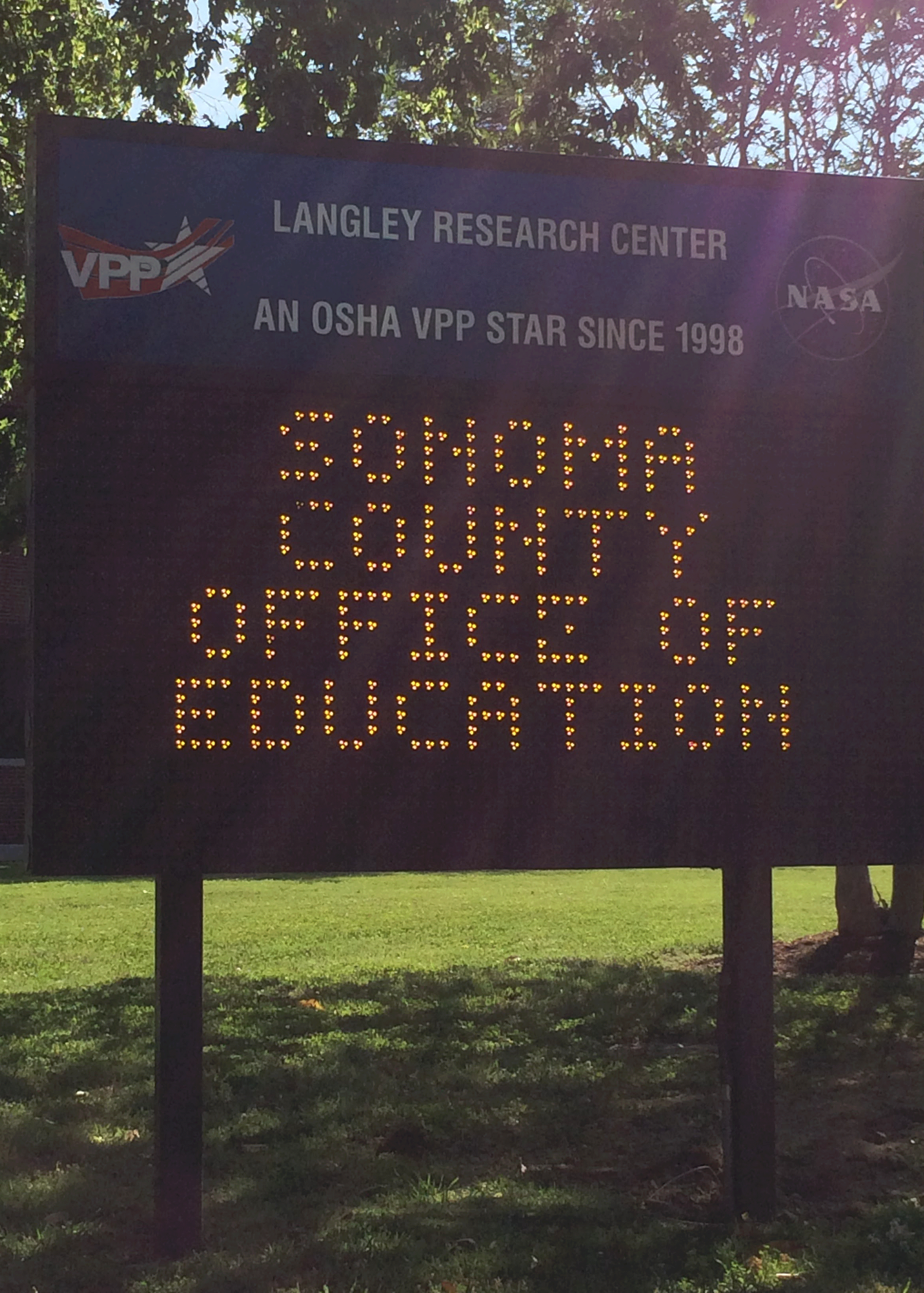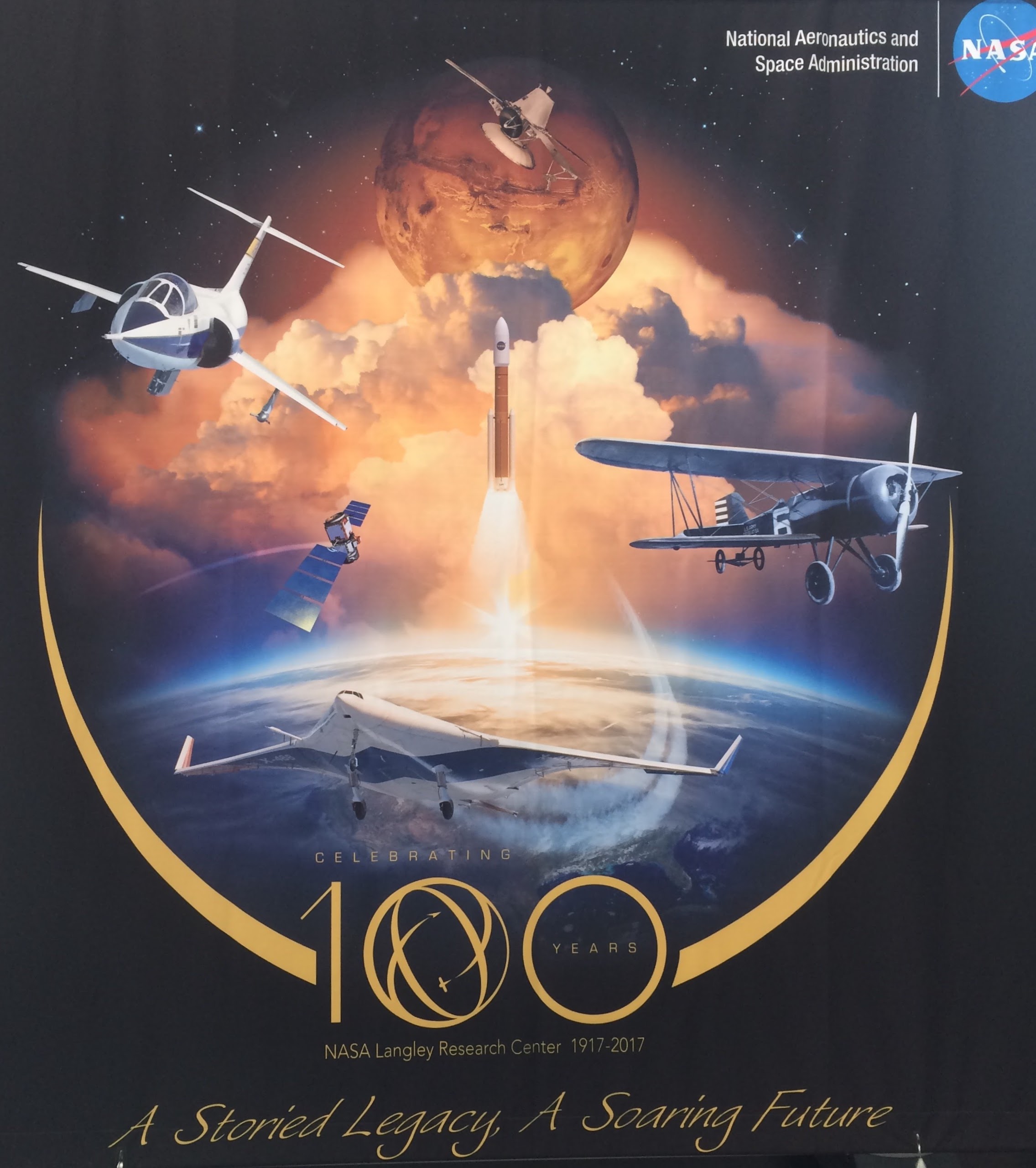Learning about making at NASA's Langley Research Center
Author: Casey Shea
Published: 05.15.17

Recently Anna VanDordrecht, SCOE’s science coordinator, and I had the tremendous opportunity to visit the NASA Langley Research Center in Virginia for an amazing tour of the facility and to present on STEAM and maker education in K-12 settings at the National Institute for Aeronautics and at the Hampton Roads Mini Maker Faire. The events were part of the ongoing Centennial Celebration whose theme - A Storied Past, A Soaring Future - can provide inspiration for educators of all ages and subjects.

The movie Hidden Figures, which takes place at NASA Langley, raised public awareness of the center and celebrated the importance of contributions from all members of society. To help educators deliver this message in their classrooms and to hopefully increase student interest and aspirations in STEAM subjects, NASA has produced an educational toolkit called Modern Figures. The resource links elements of the movie to present and future efforts, celebrating the diversity of the people working at NASA, and providing a variety of classroom activities for K-12 teachers. My favorite looks at the math behind calculating the launch for a trip to Mars.
The earliest chapters in the story of Langley were written decades before the space age in the early days of human aviation when in 1915, just a dozen years after the Wright Brothers made history in Kitty Hawk, the federal government formed the National Advisory Committee for Aeronautics (NACA). By 1917, the Langley Research Center became NACA’s first civilian aeronautical laboratory in the US and was its only such facility until 1940. In 1920, the first major wind tunnel in the US was built at the Langley Center and over the years more have been built there than any place in the US.
Wind tunnels that simulate flight conditions are responsible for many of the innovations that have produced faster and safer aircraft and spacecraft.
One of the highlights of our trip was an up-close and personal look at the still functioning Unitary Plan Wind Tunnel, built in the 1950’s, that is capable of producing air moving at up to Mach 4.6 - over 3,500 mph!
It’s difficult from photographs to get a real sense of the size of the machinery, turbines and ducting that make up this marvel, but it is truly an impressive engineering achievement that has faithfully carried out its mission for over 60 years.

Another type of NASA wind tunnel that can be modeled and scaled to fit in your classroom is the Vertical Spin Tunnel, whose design has been used since 1935 to study everything from tailspins in aircraft to entry, descent and landing in spacecraft. Simple versions can be built using easy to source equipment, a Google search of “wind tube” will produce many guides, and we also have offered make and take workshops at SCOE. Plans and activities for a more complex version are available from NASA. These contraptions can provide engaging opportunities for learners of all ages.
In modern times, many of the attention-grabbing headlines regarding NASA come from space centers in other parts of the country, but we were able to see some of the current research being done at Langley that will affect people’s lives on earth and in space for years to come. The Orion project will take the next generation of astronauts to a space based launching system built in collaboration with private companies. One of the major areas of research is in the area of acoustics as scientists work on reducing cabin noise and sonic booms for supersonic flight, with the hope of producing commercial airlines that travel close to three times faster than the current generation. Particularly impressive to me were the metal 3D printing machines and the amazing ISAAC manufacturing robot which builds precise and lightweight parts by laying down strips of epoxy coated tape.

There will be a rare opportunity to inspire students to think about the workings of the solar system at the beginning of the next school year when a solar eclipse will be visible in North America on August 21. Though it will only be partial in Sonoma County, it will be visible during the morning hours and will provide many real world opportunities for discussion and study. If you’re interested building some lessons and activities around the solar eclipse, NASA has some great resources available. In general the educational resources available from NASA are incredible and under utilized, I encourage educators to visit the main education page for general ideas and inspiration and the search page where they can filter by specific subject, resource type and grade level.
While no singular activity will turn your students into rocket scientists, the many stories of human accomplishment in the legend of NASA and in particular at the Langley Research Center can serve as inspiration and motivation for students to pursue STEAM subjects, opening doors and leading to increased opportunities as they soar into the future.
Additional Resources:
Blog: Maker Education

